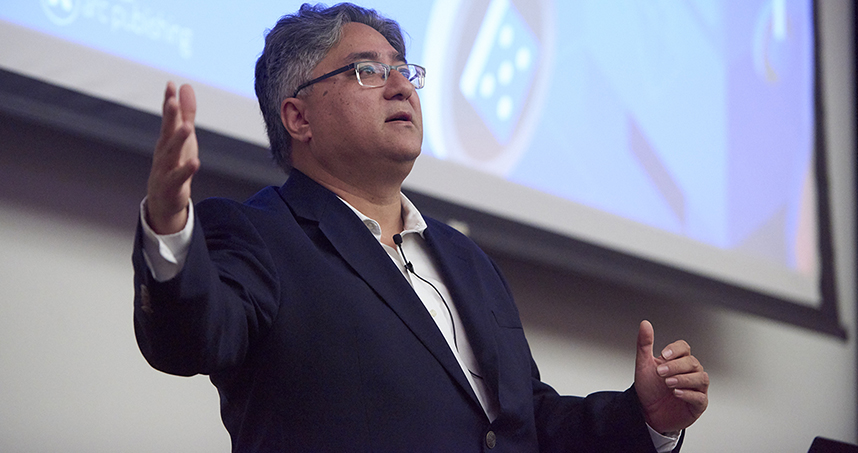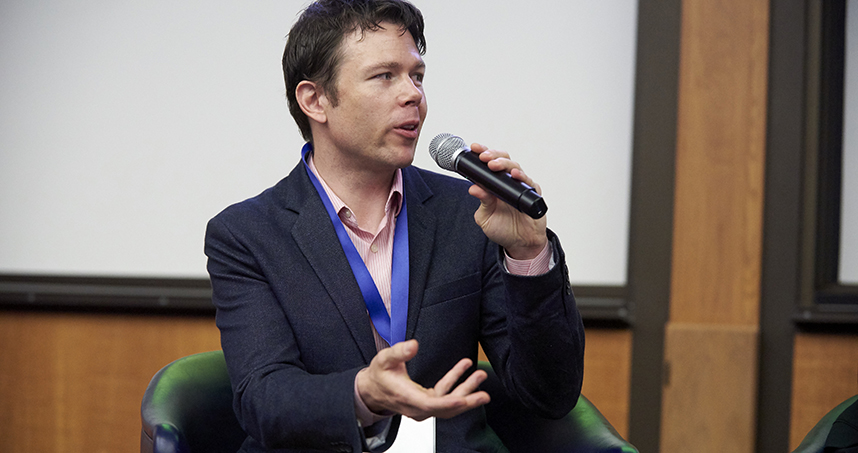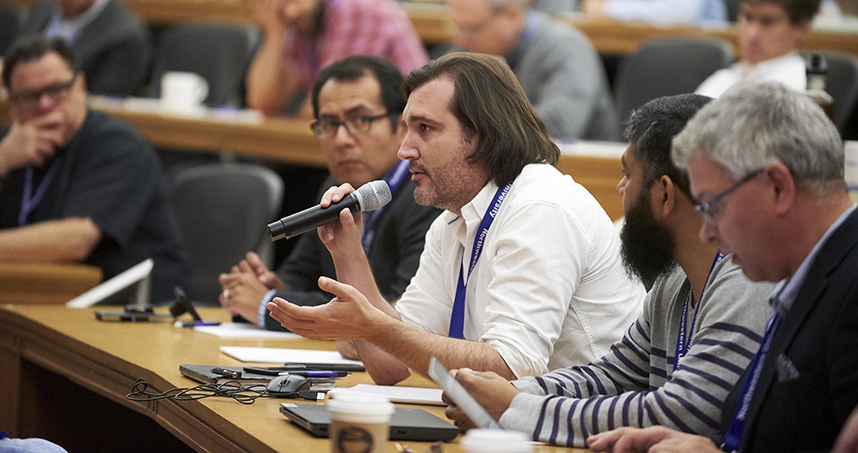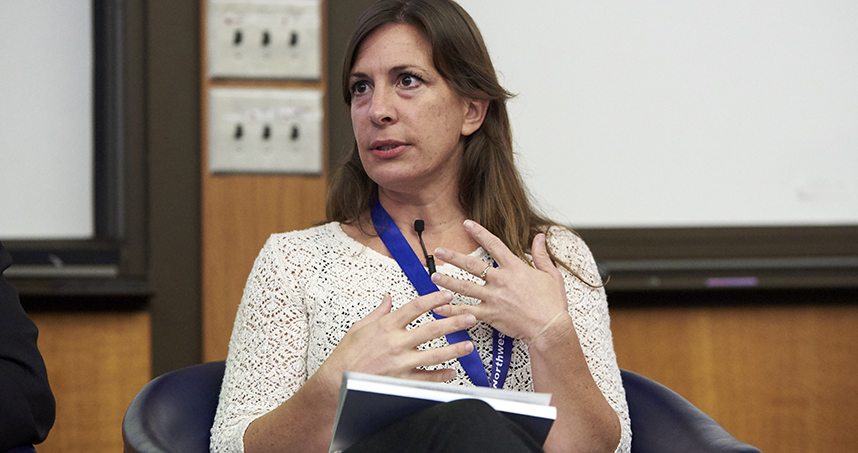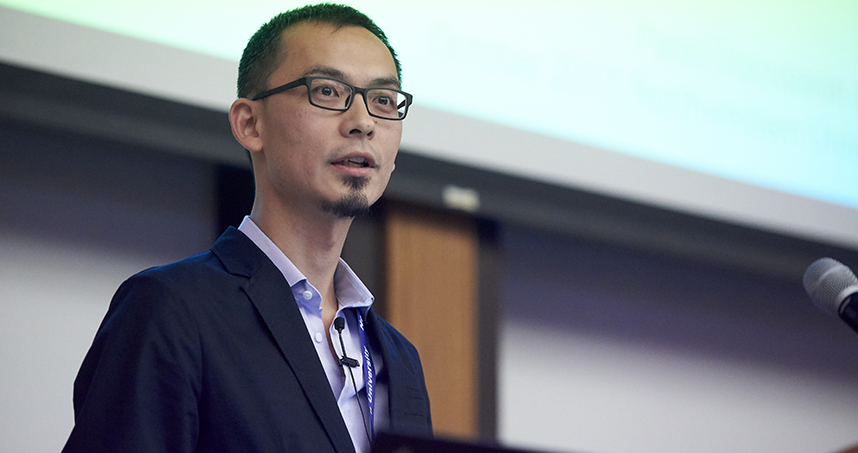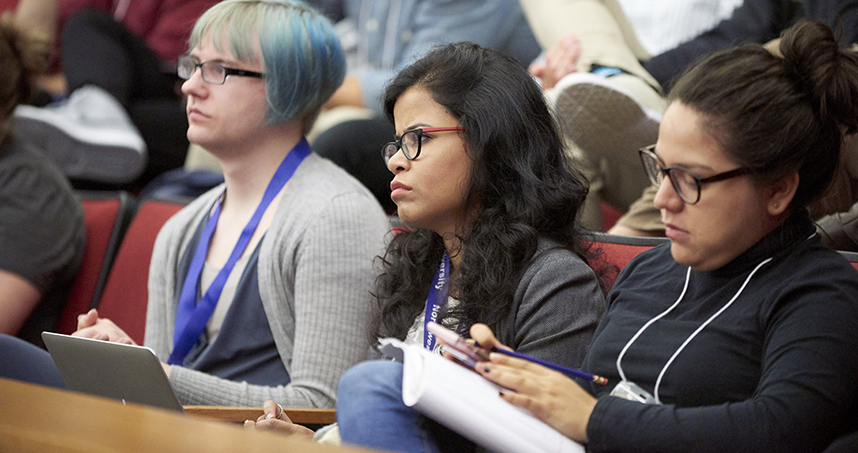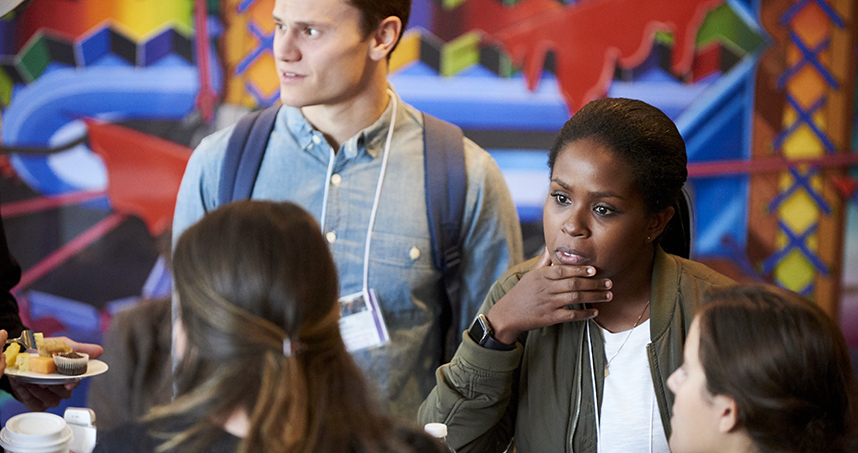How Computer Scientists and Journalists Can Win the Fight Against Fake News
Computation + Journalism Symposium discussed new technologies and approaches
Most people recognize The Washington Post as a leader in journalism. But few realize that the popular newspaper is also a quiet leader in technology.
“The Washington Post understands and embraces that it’s not enough to be good in journalism,” said Shailesh Prakash, the Post’s chief product and technology officer. “We are also fully invested in tech.”
Prakash discussed the natural marriage of technology and journalism as well as The Washington Post’s technological transformation during his keynote speech at the sixth annual Computation + Journalism Symposium.
Hosted at Northwestern, the October 13-14 symposium united journalists, technologists, academics, and industry to share research and explore ways that computation is transforming key functions of journalism, including reporting, analysis, verification, storytelling, publishing, distribution, and audience engagement.
This year’s symposium included a special focus on “fake news,” misinformation, disinformation, and fact-checking, given the attention these topics received in the wake of the 2016 US presidential election.
“Knowledge is being disseminated at a faster rate than ever before and being muddled more than ever before,” said Northwestern Provost Jonathan Holloway. “We need this conference now more than ever before.”
In his welcoming remarks, Brad Hamm, dean of The Medill School of Journalism, Media, Integrated Marketing Communications, discussed ways in which technology has already transformed the school. He referenced The Medill Justice Project’s watchdog database for cases of shaken-baby syndrome. With help from a team of graduate students in Northwestern Engineering, journalism students built and published the first-ever publicly available, interactive database to shed light on the little-explored issue.
“We’re not database people,” Hamm said. “But I thought, ‘there has to be something we can build for the good of the country.’”
Julio M. Ottino, dean of Northwestern’s McCormick School of Engineering, added that McCormick’s partnership with Medill has grown in exciting, unanticipated ways.
“We have started seeing unintended consequences,” Ottino said. “Things have moved at a speed that no one could have anticipated. Now we want to tweak the system and make it work better.”
Technology in action
In Prakash’s keynote address, he discussed ways in which The Washington Post has leveraged social media platforms to reach new and existing audiences. He noted that readers appreciate the convenience of finding news on the social media sites they already visit.
“Many journalistic brands shy away from tech and are not trusting of different platforms,” Prakash said. “We embrace where users go and are keen to have our content meet users where they are.”
Prakash also shared new technologies that The Washington Post has developed in-house and implemented to better personalize and disseminate news stories. Those technologies include:
- Clavis: a suite of tools that help the Post deliver personalized news and advertising to targeted audiences.
- Virality Oracle: a bot that predicts which stories will go viral. “If you can predict what stories will be popular, you can double-down,” Prakash said.
- Bandito: a tool that tests various combinations of headlines, photos, and blurbs for each article and measures real-time user feedback to determine the highest performing variant.
- Headliner: an algorithm that generates headlines. “What’s important right now is gone in a day,” Prakash said. “You need the machine to capture and exploit that moment at the right time.”
- Heliograf: an automated storytelling agent that can generate articles from structured data.
- Spectrum: a tool that delivers meaningful and accurate measurements, such as page views and social shares, for individual articles.
- Loxodo: a suite of easy-to-read dashboards that show data analytics in real-time.
- BreakFast: software that delivers email alerts to subscribers.
- ModBot: a bot that measures the quality of responses in the comment section of articles in order to ease the work of a human moderator.
Although The Washington Post is becoming more and more committed to using technology, Prakash said technology complements — rather than compromises — the newspaper’s longstanding journalistic principles.
“We make sure that our culture stays true to our brand and our roots,” he said. “We don’t want to veer off and become clickbait.”
Fact-checking fake news
Jonathan Albright, research director of Columbia University’s Tow Center for Digital Journalism, moderated a panel on fake news, misinformation, and fact checking. Including representatives from academia, Snopes, and Google, the panel discussed the dangers of fake news and ways to counteract it.
Albright kicked off the conversation by discussing how users on social media platforms react to articles with emojis indicating “like,” “love,” “angry,” and “sad.” He said these rating systems can manipulate emotions and cause outrage.
“Most facts are shared around emotional vectors,” he said. “I find that to be increasingly problematic.”
In her talk about fake news, Brooke Binkowski, managing editor of the fact-checking website Snopes, outlined the differences between misinformation and disinformation. While misinformation is inaccurate, it is more innocent in nature. Purveyors of misinformation are often well-meaning but confused about the facts. Purveyors of disinformation, however, purposefully aim to mislead others.
“Disinformation is a major threat to democracy,” Binkowski said. “If we can’t agree on basic facts, then democracy suffers.”
Although it may appear that fake news has increased in recent years, Binkowski said that disinformation recurs in cycles. Whenever a new form of communication is adopted, fake news and propaganda surge. Influxes occurred with the advent of the newspaper, television, and Internet. To counteract this problem, Binkowski said journalism must work harder to fill the informational void.
“With mass communication comes misinformation and disinformation,” she said. “It has been done before and beaten down before.”
Bill Adair, a journalism professor at Duke University, presented his continued quest to automate fact-checking. In partnership with Google and Schema, his research team has developed “Share the Facts,” a widget that uses artificial intelligence to fact-check articles and live debates in real time. Adair explained that the 15-second delay in broadcasts gives the widget enough time to fact-check a live debate or speech and display a pop-up in real time on the user’s screen. He added that politicians’ propensity to repeat the same talking points helps the widget anticipate disinformation and react faster.
“We know that politicians repeat their lies even when fact-checkers prove them false,” Adair said. “Fact-checking has great archival value.”
Nick Adams, a sociology research fellow at the Berkeley Institute for Data Science, discussed the difficult task of trying to establish the credibility of news articles. Because news is often multi-faceted, including persuasion and arguments in addition to straight facts, researchers are struggling to define a common set of indicators for determining credibility. He urged researchers to combine their different approaches to address the issue.
“The Internet has democratized publishing,” Adams said. “But it has not democratized editing to make sure that we get it right.”
Cong Yu, a research scientist at Google Research, presented Google’s increased efforts to fact check and fight disinformation. This spring, Google rolled out its “fact-check labels” and “fact-check snippets.” Generated from Politifact, Snopes, and other publishers, the labels indicate whether articles that appear in search are true or false. The snippets display more information about the claim, who made the claim, and the fact check of that claim. While Google is helping fact-checked articles reach a broader public, the company does not perform the actual checks.
“We cannot be the arbiter of truth,” Yu said. “That’s why we work with publishers and promote quality information that builds trust.”
